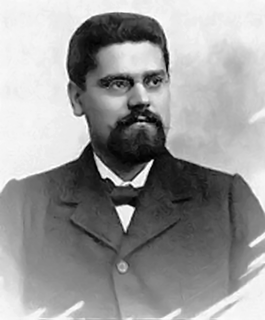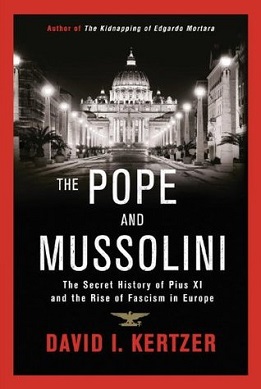Related Research Articles

Fascism is a form of far-right, authoritarian ultranationalism characterized by dictatorial power, forcible suppression of opposition, and strong regimentation of society and of the economy which came to prominence in early 20th-century Europe. The first fascist movements emerged in Italy during World War I, before spreading to other European countries. Opposed to liberalism, Marxism, and anarchism, fascism is placed on the far-right within the traditional left–right spectrum.

Giacomo Matteotti was an Italian socialist politician. On 30 May 1924, he openly spoke in the Italian Parliament alleging the Fascists committed fraud in the recently held elections, and denounced the violence they used to gain votes. Eleven days later he was kidnapped and killed by Fascists.

Alessandro Pavolini was an Italian politician, journalist, and essayist, notable for his involvement in the Fascist government, during World War II, and also, for his cruelty against the opponents of fascism.

Anthony James Gregor was a Professor of Political Science Emeritus at the University of California, Berkeley, well known for his research on fascism, Marxism, and national security.

The March on Rome was an organized mass demonstration in October 1922, which resulted in Benito Mussolini's National Fascist Party ascending to power in the Kingdom of Italy. In late October 1922, Fascist Party leaders planned an insurrection, to take place on 28 October. When fascist troops entered Rome, Prime Minister Luigi Facta wished to declare a state of siege, but this was overruled by King Victor Emmanuel III. On the following day, 29 October 1922, the King appointed Mussolini as Prime Minister, thereby transferring political power to the fascists without armed conflict.
"The Doctrine of Fascism" is an essay attributed to Benito Mussolini. In truth, the first part of the essay, entitled "Idee Fondamentali" was written by philosopher Giovanni Gentile, while only the second part is the work of Mussolini himself. It was first published in the Enciclopedia Italiana of 1932, as the first section of a lengthy entry on "Fascismo". The entire entry on Fascism spans pages 847–884 of the Enciclopedia Italiana, and includes numerous photographs and graphic images. The Mussolini entry starts on page 847 and ends on 851 with the credit line "Benito Mussolini." All subsequent translations of "The Doctrine of Fascism" are from this work.

Luigi Barzini Jr. was an Italian journalist, writer and politician most famous for his 1964 book The Italians, delving deeply into the Italian national character and introducing many Anglo-Saxon readers to Italian life and culture.

The Manifesto of Race, sometimes known as the Charter of Race or Racial Manifesto, was a manifesto published on 14 July 1938 which prepared the enactment, in October 1938, of the Racial Laws in the Kingdom of Italy. The antisemitic laws stripped the Jews of Italian citizenship and governmental and professional positions. The manifesto demonstrated the enormous influence Adolf Hitler had over Benito Mussolini since Italy had become allied with Nazi Germany.

Italian Fascism, also known as Classical Fascism or simply Fascism, is the original fascist ideology as developed in Italy. The ideology is associated with a series of three political parties led by Benito Mussolini, namely the Revolutionary Fascist Party (PFR) founded in 1915, the succeeding National Fascist Party (PNF) which was renamed at the Third Fascist Congress on 7–10 November 1921 and ruled the Kingdom of Italy from 1922 until 1943 and the Republican Fascist Party that ruled the Italian Social Republic from 1943 to 1945. Italian Fascism is also associated with the post-war Italian Social Movement and subsequent Italian neo-fascist movements.
Il Popolo d'Italia, was an Italian newspaper which published editions every day with the exception for Mondays founded by Benito Mussolini in 1914, after his split from the Italian Socialist Party. The paper was founded as a pro-war newspaper during World War I.

The Manifesto of Fascist Intellectuals, by the actualist philosopher Giovanni Gentile, formally establishes the political and ideologic foundations of Italian Fascism. It justifies the political violence of the Blackshirt paramilitaries of the National Fascist Party, in the revolutionary realisation of Italian Fascism as the authoritarian and totalitarian rėgime of Prime Minister Benito Mussolini, who ruled Italy as Il Duce, from 1922 to 1943.

Fascism in Europe was the set of various fascist ideologies practiced by governments and political organizations in Europe during the 20th century. Fascism was born in [[Kingd om of Italy|Italy]] following World War I, and other fascist movements, influenced by Italian Fascism, subsequently emerged across Europe. Among the political doctrines identified as ideological origins of fascism in Europe are the combining of a traditional national unity and revolutionary anti-democratic rhetoric espoused by integral nationalist Charles Maurras and revolutionary syndicalist Georges Sorel in France.

Richard Washburn Child was an American author and diplomat.
Giorgio Pini was an Italian politician and journalist.
Fascist Italy was not officially racist, unlike its World War II Axis partner Nazi Germany. Its leader Benito Mussolini had contrasting views on the importance of race throughout his life, at times he spoke of alarm about the possible extinction of white people, while at other times he denied the theory of race. Consolidation of gained territory in the northeast of Italy led to the state-sanctioned persecution and ethnic cleansing of Slovenes. By 1938, Mussolini supported racism, as evidenced by his endorsement of the “Manifesto on Race,” which says in its seventh point that “it is time that Italians proclaim themselves to be openly racist.”
Maria Rygier was an Italian journalist and politician.

National syndicalism is an adaptation of syndicalism to suit the social agenda of integral nationalism. National syndicalism developed in France, and then spread to Italy, Spain, and Portugal.

The Pope and Mussolini: The Secret History of Pius XI and the Rise of Fascism in Europe is a 2014 Pulitzer Prize winner biography of Pope Pius XI about his relations with Benito Mussolini and rise of Fascism in Europe by David Kertzer. The book examined documentary evidence from the Vatican archives, arguing that Pope Pius XI played a significant role in supporting the rise of Fascism and Benito Mussolini in Italy, but not of Nazism in Germany.
Revolutionary Fascist Party was the first political party established by Benito Mussolini, founded in January 1915, as described in his 1933 "The Political and Social Doctrine of Fascism".

Friendly Fascism: The New Face of Power in America is a book written by Bertram Gross, American social scientist and professor of political science at Hunter College, and published on June 1, 1980 by M. Evans & Company as a 419-page hardback book containing 440 quotations and sources. The book examines the history of fascism and, based on the growth of big business and big government, describes possible political scenarios for a future United States. According to a 1981 review in the journal Social Justice, the book is described as "timely" on a subject requiring serious consideration and is about the dangers of fascism, focusing primarily on the United States, but being aware that monopoly capitalism needs to be understood internationally since capitalism "is not a national mode of production".
References
| Wikiquote has quotations related to: My Autobiography (Mussolini) |
- ↑ Mussolini, Benito (1928). My Autobiography. Charles Scribner's Sons. p. xi.
- D'Agostino, Peter R. Rome in America. Transnational Catholic Ideology from the Risoregimento to Fascism. U of North Carolina P, 2004.
- Diggins, John P. Mussolini and Fascism: the View from America. Princeton, N.J.: Princeton UP, 1972.
- Fermi, Laura. Mussolini. Chicago: Chicago UP, 1961.
- Lindberg, Kathryn V. "Mass Circulation versus The Masses. Covering the Modern Magazine Scene." In: National Identities - Postamerican Narratives. Ed. Donald E. Pease. Duke UP, 1994, 279-310. Mussolini was a bully at his school